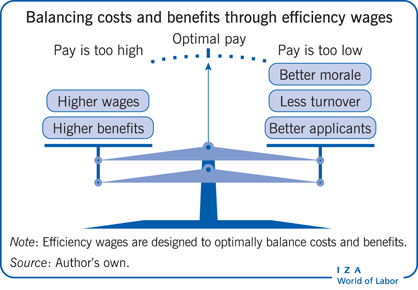Efficiency wage models are economic theories that explain why employers may choose to pay wages above the market-clearing level. The central assumption is that employee performance is not fully contractible or directly observable, and can be positively influenced by the real wage paid.
According to the core hypothesis, employers often avoid wage cuts, even when there is a surplus of labor, because the negative impact on employee motivation and productivity may outweigh any short-term cost savings. In this context, efficiency wages serve as a mechanism to bridge the gap between current pay and alternative earning opportunities, particularly under imperfect information.
The aim of efficiency wage strategies is multifaceted:
-
To attract highly productive workers, addressing the adverse selection problem.
-
To incentivize performance and reduce shirking, as explained in the shirking model.
-
To lower turnover-related costs, in line with the labor turnover theory.
-
To foster a perception of fairness, as emphasized by the sociological approach to wage determination.
Overall, efficiency wage models offer insight into real-world wage rigidity and the complex relationship between compensation, motivation, and productivity.
« Back to Glossary Index





![15 Employee Offboarding Templates That Save Hours of HR Time [Free Downloads] 15 Employee Offboarding Templates That Save Hours of HR Time [Free Downloads]](https://i1.wp.com/www.hrcloud.com/hubfs/Header.png?w=150&resize=150,100&ssl=1)
